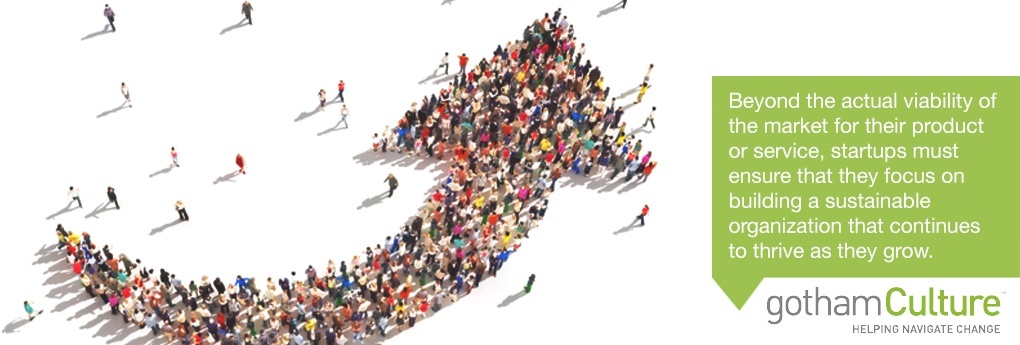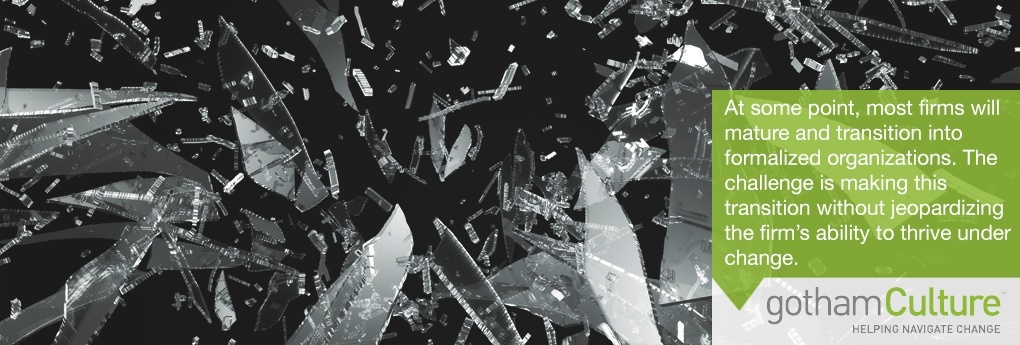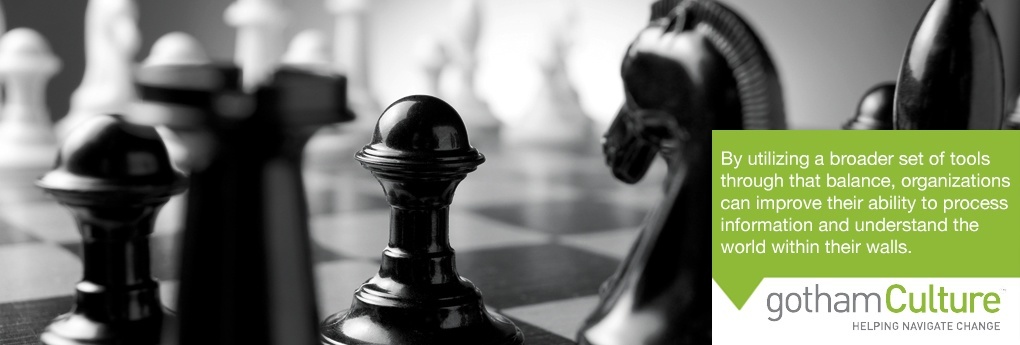In today’s fiercely competitive startup landscape, entrepreneurs are faced with new challenges on a daily basis. Beyond the actual viability of the market for their product or service, they must ensure that they focus on building a sustainable organization that continues to thrive as they grow and change.
Guiding a company from startup to success means finding the balance between a sustainable growth strategy, a culture that reflects your values and supports your people, and a leadership team that will help drive the change.
Finding that balance is a challenge, however. It’s not just about having a cool office or great benefits. You have to ensure your employees and your culture are aligned with your vision for growth. Your leadership has to be invested in the values and direction of the company; fostering an ecosystem that drives the behaviors you need for success.
Know WHY You’re In Business
The most important aspect of your startup culture is ensuring it aligns with WHY you’re in business. Is it about providing exceptional customer service? Is it speed and efficiency? World change?
Whatever it is, the culture should be reflected in what your customers see and experience. What are people passionate about, and what is the ideal environment that supports that? Some would argue attention to culture is even more important than processes, plans, and requirements.
Keep in mind: looking for culture fit is great when hiring, so long as you want to reinforce the culture you currently have. If, however, you are looking to change the culture, hiring and keeping people who embody those values and behaviors is the way to go.
Start by understanding why you’re in business and what kinds of values define your organization. Starting with an intentional and authentic understanding of this can serve as a hiring lens as your company grows.
It’s then the responsibility of senior leadership and other key personnel to give it the momentum you need to drive change in the right direction. You have to ensure that your people feel supported by the leadership and culture so they stick around.
How Important Are First Impressions?
Today’s rapidly growing startups are often pressured to find the balance between looking cool, hip and successful to attract top talent, while not blowing their budget on office space and benefits.
While a small company cannot keep up with the likes of Google in terms of benefits or campus amenities, first impressions are still critical to attracting and retaining the right people.
Careful attention must be paid to the culture that is visible. But, more importantly, the substance must be there as well. Perks, games, and exposed brick walls mean nothing if they are simply window dressing. They must serve some sort of greater purpose within the organization.
Start with ‘why’ and align your culture and your people around those values.
3 Tips For Building A Thriving Culture
Here are three specific considerations for your rapidly growing company to build and nurture a sustainable startup culture:
1. Use core values as the hiring lens. Core values should align with, and reflect company culture. If they don’t, it may be time for you and your team to do some rethinking to do on that front first!
Core values are where an organization has opportunity to reflect culture in written form. So much of culture is intangible or understood and not necessarily discussed or documented. Revisit the ideas that inspired you to be in business in the first place, and use them as a compass to guide your hiring decisions.
Put those core values to work.
2. Long to hire and quick to fire. It’s an old business axiom but it has some relevance here. Take the time to explore, inquire, test, and evaluate each candidate to ensure that they align well with your organizational culture. Do they believe in the same values that your company follows? Are they going to proactively improve the existing culture as your company grows and changes?
Having extended dialogue with each of your candidates also ensures you’re giving them the opportunity to evaluate company fit as well. Beyond just wanting or needing a job for a job’s sake, what role can your company play in their career and/or personal development over time? Does your company’s mission align with their goals as a person and a professional?
“Quick to fire” may not be as important here as “quick to ensure people are sticking to core values” and practicing the kinds of behaviors and qualities you want to see reflected in your culture.
3. Disrupt patterns through culture oriented actions and events. Reinforce your company culture through disruptive and experiential organization activities.
Internally, this means nurturing your culture among your team. Host events to discuss organizational objectives and provide opportunities for people to provide their input. Think about development programs to train on specific intended outcomes.
Externally, it means creating customer experiences that involve personnel in culturally specific ways. These are opportunities to show off your company culture to your customers, and give them an idea of how your values and your people align with your branding and customer experience.
It is almost too easy to ignore culture in a growing/thriving startup. We get caught up in the operations of success, the glory of new outcomes, or the challenges faced. Ignoring culture now, however, at this crucial juncture, more than likely creates trouble spots as the company grows. Being mindful of using culture as a hiring lens, as a means for guiding continued development, and as a springboard for a broader diversification of experiential activities will lead to benefits not only in the maturation of culture, but in the growth and success of the business overall.




 “Culture” was just recently named
“Culture” was just recently named  I recommend that every organization do a Values Audit.
I recommend that every organization do a Values Audit. Every year organizations develop “new” initiatives that they plan to roll out in the coming year. Many focus on new ways to manage the organization or more employee flexibility and autonomy. These initiatives aim to enhance morale and get better buy-in from the workforce.
Every year organizations develop “new” initiatives that they plan to roll out in the coming year. Many focus on new ways to manage the organization or more employee flexibility and autonomy. These initiatives aim to enhance morale and get better buy-in from the workforce.





